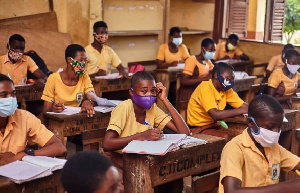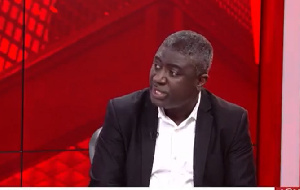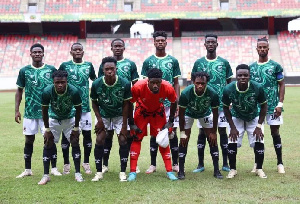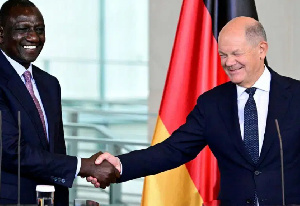Opinions of Wednesday, 31 August 2022
Columnist: Michael Ameley
Harrowing tales of education in rural Ghana
In 21st Century Ghana, the harrowing experience that rural kids have to undergo to access basic education leaves so much to be desired of our educational system in Ghana. While their counterparts in the urban settlement are studying artificial intelligence and robotics, some of them do not even have the luxury of a common table and chair to sit on.
The irony is that one day they would be expected to write the same B.E.C.E exams as their counterparts in the cities. Governments over the years appear to have done their bit, to improve the situation, but it’s still woefully inadequate, as the inequality gap between the rural and urban settlers keeps widening with time.
The constitution in Article 25(1) talks about the need for every child of school-going age, to have the right to equal opportunities and facilities, that would enable them to realize their educational goals in life. It goes on to explain in Article 25(1)(b) that basic education shall be free, compulsory, and available to all children; even more instructive is the Provision in 25(1)(e), which emphasizes the active Pursuit of a development system of schools with adequate facilities at all levels.
Goal 4 of the sustainable development goals of the U.N also highlights ensuring inclusive and equitable quality education and Promoting Lifelong learning opportunities for all.
The aforementioned quotation is evidence of a growing body of literature review about the desirable level of education that Ghana is supposed to attain. Still, the reality on the ground is a far cry from the idealistic and egalitarian state that the constitution envisages, not least in rural Ghana.
Free compulsory universal basic education was first introduced during Nkrumah’s era when personnel known as Educational Inspectors went around various homes to sanction parents, who refused to send their children to school.
Nkrumah also gave special preference to citizens in the Northern Region, to access free education even up to the tertiary level, because of the extreme and excruciating poverty that prevails there. All these rafts of measures were done to ensure that children of school-going age were not deprived of the opportunity on the basis of need. Sadly, when Nkrumah exited power, this initiative was shelved as succeeding governments failed to continue it.
It was not until the advent of President Kufour’s administration, that this noble initiative was revisited, pursuant to article (25)(1)(b) of the 1992 Constitution, which was christened Free compulsory Universal Basic Education (FCUBE).
The FCUBE Policy entails the introduction of a policy christened “Capitation Grant” which provided a subsidy of GH¢4.50 per pupil per academic year to cater for the cost of tuition and other ancillary expenses. Most importantly this policy was also meant to bridge the yawning and unacceptable gap in education between the rural and urban dwellers of this country.
As laudable as this initiative is, seventeen years down the line, the country is still struggling to close the gulf that exists between rural and urban education. With the passage of time, it’s become apparent that the solution to Ghana’s basic education problem goes beyond Capitation Grant, as a growing number of school-going children are still denied the opportunity on the basis of need.
In comes the Mills Administration in 2009, with an ambitious project to eliminate schools under trees and also provide free uniforms and sandals, as an additional means of eliminating the cost barrier associated with providing basic education for parents. The main focus of the Mills Administration, which was the elimination of schools under trees, targeted rural areas of the country which formed the greater percentage of basic schools in the country with poor infrastructure.
Available statistics indicated that out of the total of 4,000 schools under trees that were earmarked, the government managed to build about 1,775 schools to replace them between the Period of 2009-2012.
This heavy investment in infrastructure for basic schools brought into sharp focus the decrepit and dilapidated state of basic schools in rural areas. It is for these reasons that some policy analysts in the educational sector sharply criticized the current government’s introduction of the flagship Free S.H.S Programme when the FCUBE has not been consummated.
Many were of the view that the resources that sank into the Free S.H.S Programme could have been effectively applied to consummate the FCUBE Program before the roll-out of the novel Free Senior High School Programme.
Availability of teachers also forms one major challenge that bedevils rural schools in Ghana, according to an educational think tank, Africa Education Watch, there has been an overconcentration of teachers in the urban cities to the detriment of the rural areas, which creates the false impression of shortage of teachers in the country.
Available statistics gleaned by the African Education Watch, further reveal that there are over a thousand classrooms in rural areas without teachers, which unfortunately culminates into a staggering dropout rate of 30 Pupils in a day.
In the Adenta Municipality, for instance, there are 18 public primary schools with 140 classrooms, ideally, the total number of teachers that are needed in the Municipality should be 140 plus school heads, which brings the total teaching staff to 158. But strangely enough, Adenta Municipality has an overconcentration of 363 teachers, with a considerably high number of surplus teachers, who are not willing to accept posting to the rural areas.
Kumasi Metropolis similarly has 98 Primary schools with 820 classrooms, with 918 teachers and a headteacher needed, but as the statistics reveal, the teaching staff in the metropolis is overpopulated to the tune of 1,208 teachers with a surplus of 290 teachers.
Sadly their counterparts in the rural areas of the country cannot boast of the required number of teachers per school.
These grim statistics on the National distribution of teachers point to a sharp inequality between the urban cities and rural communities. Conditions in the rural basic schools paint a picture of hopelessness, dejection, and neglect by officialdom. Educational experts advised that rationalization and equitable deployment of teachers would help ease the shortages experienced in rural areas.
In Adenta and Kumasi Metropolis alone, rationalization and equitable distribution of teachers could release close to 500 teachers to other parts of the country where teachers are in short supply.
The challenges and inequality gaps are not only limited to the availability of teachers and poor infrastructure, but also encompass quality tuition, teacher absenteeism, lack of educational materials, and a host of other factors that inhibit the smooth running of basic education in rural areas.
The net effect of these anomalies is increasing rural-urban drift which has for a long time become an albatross around the neck of the state. It’s sad to note that, a chunk of street hawkers who roam our streets are products from basic schools in the rural areas, who either drop out of school or failed to progress to senior high school after basic education.
It is for this reason why a holistic target of rural basic education should be a priority for the government and partners in the education sector, to help stem the tide of young pupils abandoning school to seek greener pastures in the big cities.











